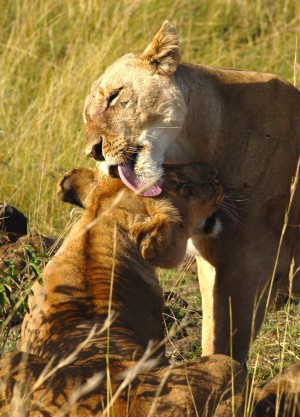News
Latest Lion Aid News
Lions in western Africa are in serious trouble
Thursday 8th December 2011
|
With new information available, LionAid has revisited the very serious and grim situation of the western African lions. In 2006, the IUCN published a conference report that opined there were between 1495 and 2530 lions in western Africa, albeit in mostly small and isolated populations. That estimate was based on the “opinions of experts” attending the conference. Perhaps “wild guesses” would have been more a more appropriate descriptor. New information has become available in 2010 and 2011, and these results paint a completely different and much more depressing picture, especially as they are based on some actual surveys. Western African lions are genetically distinctive from other lions in Africa. Think Bengal Tigers and Siberian Tigers. But unlike those tigers, the western African lions have not been given much (any?) conservation attention. The IUCN has only unofficially recognized them as “regionally endangered”, and not formally afforded them the Red List status they now sadly deserve. And these lions, believe it or not, are still trophy hunted – from 2000 to 2009, a total of 263 male lion trophies was exported from Cameroon, Burkina Faso and Benin. Would people sit quietly by if Siberian Tigers were trophy hunted? So why this strange complacency for western African lions? Have a look at the table below that summarizes the status “accepted” by the IUCN in 2006, the more realistic current estimates, and the LionAid analysis. And realize that continued complacency will kill this unique cat.
IUCN 2006 western African lion population numbers and current updates
This more reliable current information indicates significantly lower lion population numbers than proposed by the IUCN in 2006. While the IUCN estimates cannot be considered reliable as they were based on little more than “opinions”, so the estimated declines of between 59 and 72% must be seen as approximations and not necessarily applicable to the last five years. However, what is abundantly clear from current information is that far fewer lions exist in western Africa than previously thought, and thus that their conservation status is becoming ever more tenuous. Given that western African lions are genetically highly distinctive from eastern and southern African lions, the need for effective protection programmes becomes ever more urgent. a Where no new information exists, the 2006 data is brought forward Picture credit: Martin Fowkes Tags: lions, trophy hunting, IUCN, western African lions, population declines, Categories: Trophy Hunting, Population declines |
Add a comment | Posted by Pieter Kat at 14:02




